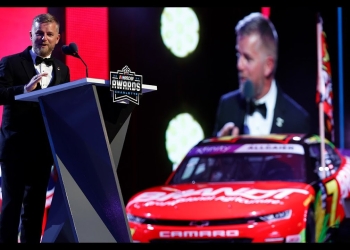The Birth of NASCAR's First Superspeedway: Darlington's Southern 500
In the early days of stock car racing, Darlington Raceway emerged as a revolutionary venue that would forever change the landscape of motorsports. Located in South Carolina, this mile-and-a-quarter track represented a dramatic departure from the humble dirt tracks that dominated racing at the time.
A New Era in Racing
Before Darlington's emergence, most racing took place on:
- Mile-long dirt tracks
- Local fairgrounds
- Small regional venues
"Darlington was our Super Bowl, our Kentucky Derby. It was the biggest thing that happened in racing," recalls Richard Petty, reflecting on the track's significance.
Revolutionary Features
The Southern 500 introduced several groundbreaking concepts to stock car racing:
- Track Size: At 1.25 miles, it dwarfed existing facilities
- Race Distance: The unprecedented 500-mile length
- Pit Stops: A new concept for many racers
- Professional Organization: First major speedway purpose-built for stock cars
Early Racing Challenges
The first Southern 500 presented unique challenges that showcase how primitive racing was in those days:
| Challenge | Solution |
|---|---|
| Tire Shortage | Competitors took wheels from cars in infield |
| Fuel Management | Limited pit stops (estimated one stop per race) |
| Track Navigation | Drivers had no experience with larger tracks |
Improvisation and Innovation
One of the most striking aspects of early Darlington races was the improvisational nature of competition. Drivers would:
- Scavenge parts from spectator vehicles
- Adapt passenger car components for racing use
- Learn pit stop strategies through trial and error
Historical Impact
The track maintained its position as NASCAR's premier venue for several years before Daytona International Speedway's construction. As Richard Petty notes:
"It took three or four years for Daytona to outshine Darlington."
Legacy
Darlington's influence on NASCAR cannot be overstated. The track:
- Established the template for professional stock car racing
- Demonstrated the viability of longer-format races
- Opened new possibilities for what NASCAR could become
Click here to preview your posts with PRO themes ››
The track's innovation and success proved that stock car racing could evolve beyond its humble origins into a major professional sport, setting the stage for NASCAR's eventual national expansion.
H4 The Winning Formula
The early Southern 500s were often won not by the fastest car but by the best-prepared team. As Petty explains, success came down to:
- Tire management
- Vehicle durability
- Strategic planning
- Adaptability to track conditions
The winner typically emerged as the driver who could best conserve their equipment while maintaining competitive speeds throughout the grueling 500-mile distance.









